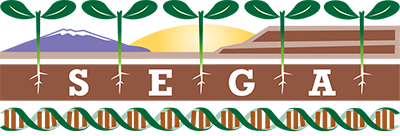You are here
The relative influences of host plant genotype and yearly abiotic variability in determining herbivore abundance.
Publication Type:
Journal ArticleSource:
Oecologia, Volume 168, Issue 2, p.483 - 9 (2012)ISBN:
0029-8549URL:
http://www.ncbi.nlm.nih.gov/sites/entrez?Db=pubmed&DbFrom=pubmed&Cmd=Link&LinkName=pubmed_pubmed&LinkReadableName=Related%20Articles&IdsFromResult=21918874&ordinalpos=3&itool=EntrezSystem2.PEntrez.Pubmed.Pubmed_ResultsPanel.Pubmed_RVDocSumhttp://www.ncbi.Keywords:
Animals, Bayes Theorem, Genotype, Herbivory, Mites, Population Density, Population Dynamics, PopulusAbstract:
<p>Both plant genotype and yearly abiotic variation affect herbivore population sizes, but long-term data have rarely been used to contrast the relative contributions of each. Using a hierarchical Bayesian model, we directly compare effects of these two factors on the population size of a common herbivore, Aceria parapopuli, on Populus angustifolia × fremontii F(1) hybrid trees growing in a common garden across 8 years. Several patterns emerged. First, the Bayesian posterior estimates of tree genotype effects on mite gall number ranged from 0.0043 to 229 on a linear scale. Second, year effect sizes across 8 years of study ranged from 0.133 to 1.895. Third, in comparing the magnitudes of genotypic versus yearly variation, we found that genotypic variation was over 130 times greater than variation among years. Fourth, precipitation in the previous year negatively affected gall abundances, but was minimal compared to tree genotype effects. These findings demonstrate the relative importance of tree genotypic variation in determining herbivore population size. However, given the demonstrated sensitivity of cottonwoods to drought, the loss of individual tree genotypes from an altered climate would have catastrophic impacts on mites that are dependent upon these genotypes for their survival.</p>
- Log in to post comments
- Google Scholar
- RTF
- EndNote XML
- RIS
Theme by Danetsoft and Danang Probo Sayekti inspired by Maksimer
